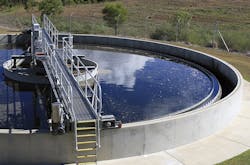Produced water treatment equipment market to reach $1.6B by 2020
Oil and gas companies are increasingly looking to reduce their water consumption, and recycle and reuse produced water wherever possible. This trend is boosting the market for the specialist equipment required to treat it.
According to a new report from BCC Research, the North American market for produced water treatment equipment (PWTE) was worth $1.0 billion in 2014 and is expected to reach $1.1 billion in 2015. Over the next five years the market is predicted to grow at a compound annual rate of 8.2 percent, reaching a value of $1.6 billion in 2020.
Produced water is water that is brought to the surface during oil and gas exploration and production. It can include water that is present naturally in the reservoir, together with water previously injected into the reservoir and condensed water from gas production.
Key drivers of the PWTE market include rising demand for water conservation, increasing environmental awareness and regulation, and growing use of water in oil and gas production as a result of technologies like hydraulic fracturing, the research firm said.
“With water becoming more precious, increased environmental awareness and a number of other factors, produced water is increasingly being treated for use as a beneficial resource,” explained BCC research analyst Nana Lapham.
“Produced water from fracking operations can be reused after settling, filtration or other types of primary treatment methods to greatly reduce freshwater use and other associated fees and costs. More advanced treatment may be used to treat produced water with high TDS (total dissolved solids) levels, although there may be high costs and energy requirements for some treatment technologies.”
The report shows that oil fields currently account for 77 percent of the PWTE market, with the remaining 23 percent used for gas fields. This balance is anticipated to shift slightly in the coming years, with oil fields representing 79 percent and gas fields 21 percent of the market by the end of the decade.
